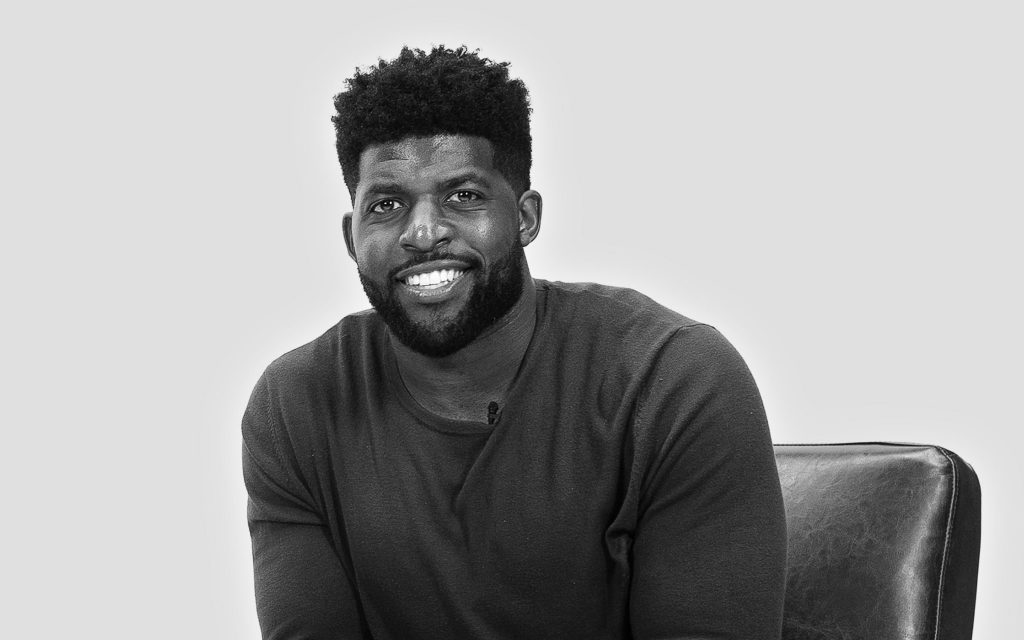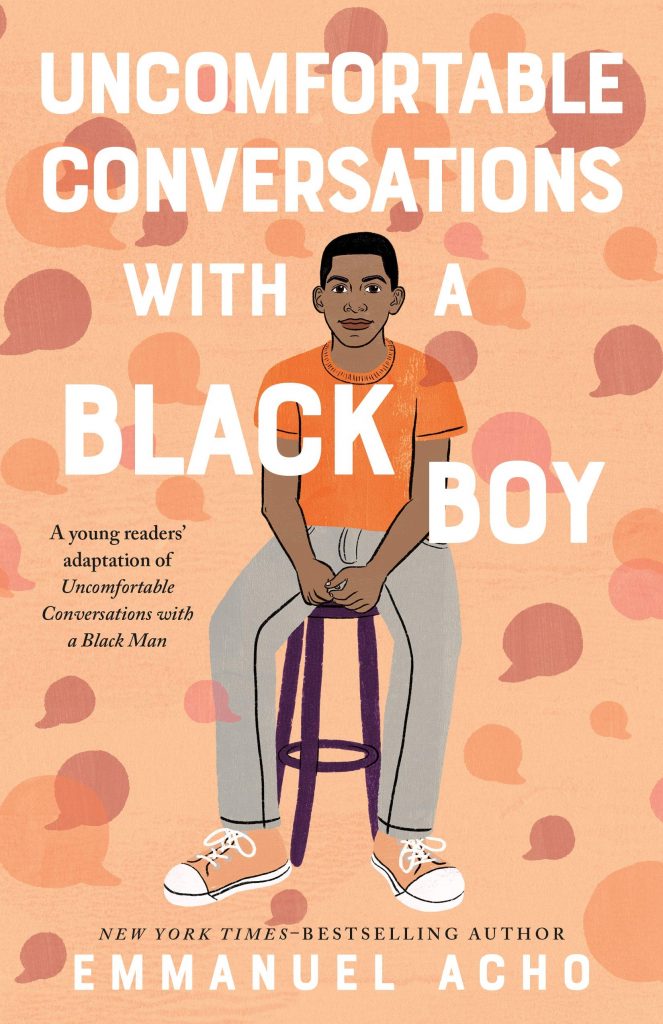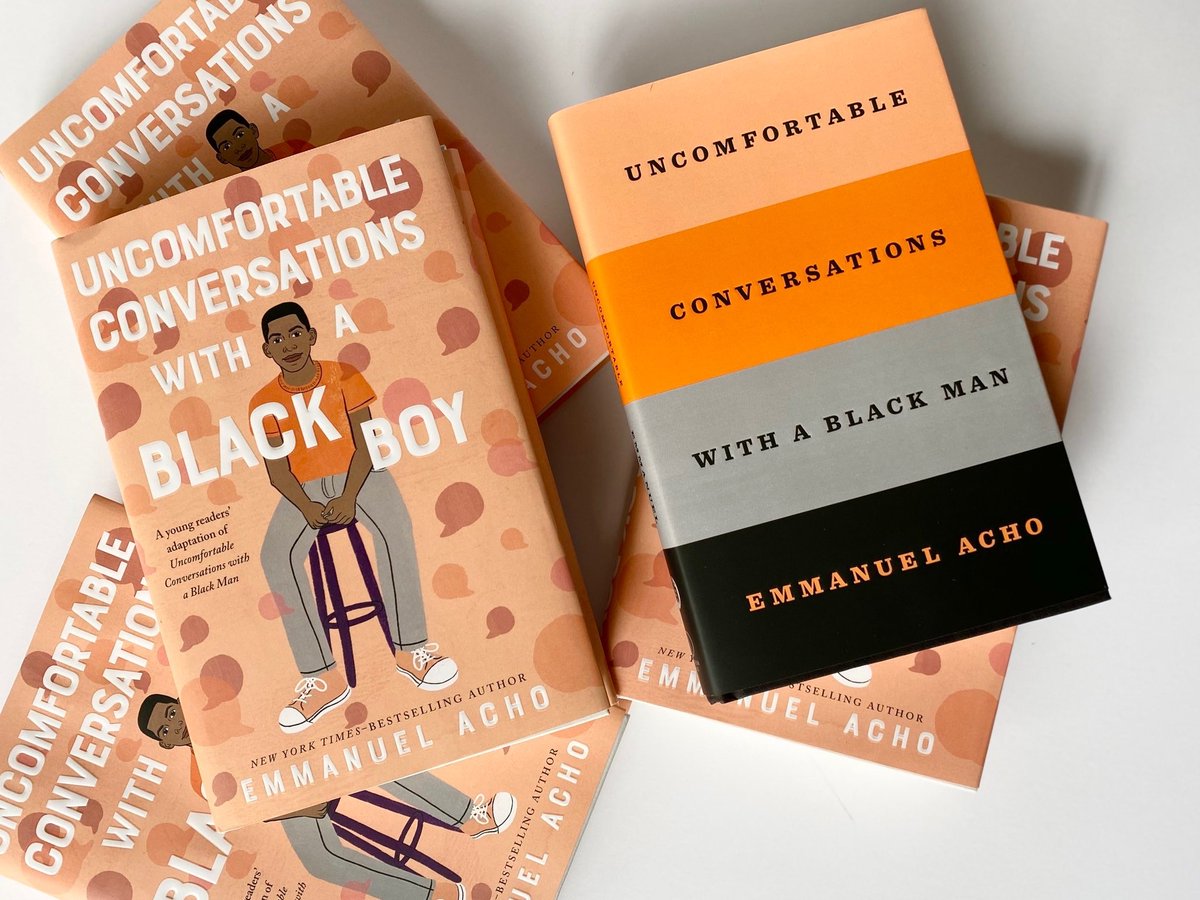*****
WTR (What’s Toby Reading)? provides unsolicited and unsponsored (I don’t get paid) opinions of books I have recently finished.
*****
I have uncomfortable conversations with my son, Yosef, daily.
“Yosef, it’s dark outside. You can’t wear your hood up.”
“Dad, did you see there was another police shooting of a black kid today?”
“Yosef, you might have a better chance at that scholarship because you’re black.”
“Dad, I don’t really talk like I’m black.”
These awkward conversations are exactly why I wanted Yosef to read Emmanuel Acho’s Uncomfortable Conversations with a Black Boy. All parents, from all backgrounds, with varying levels of racial awareness should commit to learning about racial issues. And, more importantly, we must demand that our children develop an understanding of current racial issues alongside of us.
Just because race is omnipresent in my household, that doesn’t mean I know anything much about it.
I know my son. I know about raising kids. I’m far from an expert about translating the tangled topics of race, racism, and the historical context of blackness and whiteness in America to my children – especially to Yosef.
I needed Acho’s help. Many of us parents, in fact, do.
Emmanuel Acho’s Uncomfortable Conversations with a Black Boy is the young adult follow-on to his New York Times Bestseller of a similar title for adults. I read the book in a few days with the intention of, next, handing it to my fifteen year-old son.
In doing so, I learned a few lessons that I hope he does, too.

Lesson #1: History Context of Current Racial Issues
The chapters of Uncomfortable Conversations begin with the introduction of the concept Acho will discuss, followed by a subsection called “Let’s Rewind”. I found these sections to provide age-appropriate, historical context to the massively complicated racial issues of today.
The “Let’s Rewind” sections include topics like: the origin of the N-word, the beginning of unjust policies in housing and civic policy through time, the inequitable impact of criminal legislation on black people, and the genesis of racial labeling (ie: preferences of “black” vs. “African-American”).
For young people reading the book, this information is a critical piece of understanding current racial outrage, and reasoning through the importance of further future changes.
Lesson #2: Whole Picture, Not the Selfie
So much of the book adequately notes that kids – all kids and, likely, their parents – didn’t explicitly create the current racial mess while encouraging them to participate in the change anyway. Acho emphasizes the idea that racism cannot be a simple, construct of our own experiences alone (ie: I’m not racist, either are my friends so I’m good). A global view must be taken when thinking about these charged topics – otherwise, we assume that our own biases, thoughts, and experiences are pervasive to everyone else.
Race and racism has an impact on everyone, in a variety of ways:
- My son may be fine as an “African-American” while Acho prefers “black”.
- My boss may be black, but that doesn’t mean there are equal opportunities for all black people to rise to such distinguished ranks.
- My son may listen to songs with the N-word every two seconds, that doesn’t mean I would condone its use.
- We may benefit from Affirmative Action policies, that does not mean the deck is stacked against our white friends’ kid vying for the same opportunity.
When talking about race, the whole picture must be portrayed, not our own, often narrow views. In a time where kids take more selfies that photos of friends, we need to harp on them to take a broader view of the world outside of themselves – looking for privileges they’ve been afforded without virtue, and working to spread that relative affluence to those without.
Lesson #3: The Power of Voting
Emmanuel Acho tells a powerful story about voting during a recent election.
Acho, a TV Host, former NFL star, NYT Bestselling author -,is busy. One election day, he pulls up to his polling place to find a two-hour wait. (He quotes himself joking with the poll worker, “Are they giving away trips to the Bahamas?”). Acho contemplates leaving. He doesn’t, though, because of a woman standing in line reminds him of the sacrifices made by previous generations to provide him the right he was set to abandon.
The story will resonate with kids that read the book – and it absolutely needs to. Our kids have been raised during a time of hotly contested elections. Some kids may run into the fire while many others, I fear, will stay away from the fray.
Not only does Acho emphasize the power exercised by the right to vote, he paints the picture of the painstaking process endured by so many so that our children can have their voices heard. Tell your kids to vote!
Summary
As someone who is conscious of race and racism daily, Acho’s book was a refreshing way to keep this conversation going with my son – who’d prefer to sink into a video game before a peach-covered book his dad insists he reads.
For any parent who might not feel confronted by race each day, I’d pick up the book as a way to remind yourself that you ARE, indeed, dealing with race as you go about your day. We all are.
The book will open your family’s eyes to topics, differing points of view, and historical details that you may not have identified as racial biased. Acho’s book provides a safe place to delve into edgy subjects that you might be publicly timid to take on. These conversations are critical – and, as Acho says, uncomfortable.
Parents need to get uncomfortable. So do our kids.
Books like Uncomfortable Conversations with a Black Boy must become a foundational method of talking about race and racism with our kids – like NOW.
Book Details:
Pages: 312
Published: 2021 by Roaring Brook Press
ISBN: 978-1-250-80106-7
Amazon Price: $12.89
Amazon Stars: 4.6/5
Amazon Order link: here

